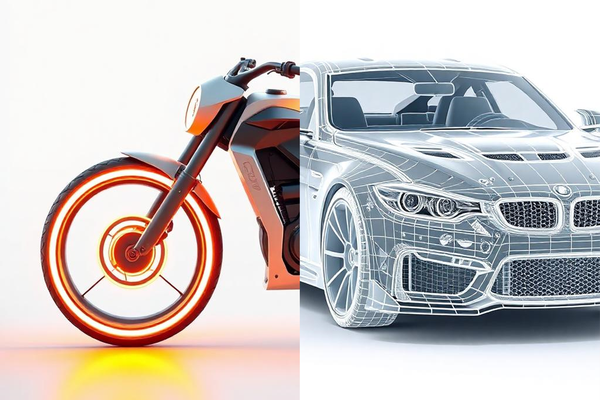Parametric vs Direct 3D Modeling
In the world of 3D design, two giants dominate the landscape: Parametric Modeling and Direct Modeling. Both have their strengths and weaknesses, but how do you know which one to choose? Whether you’re crafting a complex mechanical part or a creative, organic sculpture, understanding these approaches is key to unlocking your full design potential.

What is Parametric Modeling?
Parametric modeling is all about precision and control. It allows designers to establish relationships between features and dimensions using constraints and parameters. This structure means that when one dimension is adjusted, related elements update automatically.
Picture designing a complex gear. If you need to tweak its diameter or the number of teeth, parametric modeling handles these changes seamlessly. It’s a go-to choice for tasks requiring:
- Consistency across product variations: Easily adjust dimensions for product families.
- Complex assemblies: Ensure every part fits together perfectly.
- Manufacturing-readiness: Automatically generate precise models for production.
Parametric modeling shines in industries where accuracy, repeatability, and collaboration are non-negotiable.
What is Direct Modeling?
Direct modeling takes a more flexible and intuitive approach. Rather than relying on parameters, you sculpt your model directly, almost like working with clay. Want to stretch a surface or modify a face? Just grab and pull.
Imagine working on a conceptual product prototype. Instead of worrying about how a model reacts to changes in parameters, you simply reshape the geometry until it meets your vision. This method is ideal for:
- Creative exploration: Quickly iterate on ideas without being constrained by rules.
- Rapid changes: Modify imported models or adapt designs on the fly.
- Artistic designs: Craft organic shapes or complex textures with ease.
This approach is particularly popular in creative industries, where design speed and freedom are key.
Which One Should You Choose?
It depends on your project and workflow:
- Use Parametric Modeling if:
- Your design involves precise measurements or repeatability.
- Ideal for highly regulated industries with strict design specifications.
- You’re working in engineering, architecture, or manufacturing.
- Use Direct Modeling if:
- Creativity and flexibility are your top priorities.
- You’re working in animation, gaming, or concept design.
Why Not Both?
Modern CAD tools are increasingly blending the two methods, allowing designers to leverage the strengths of each approach. For example, you might use direct modeling during brainstorming to explore shapes quickly and switch to parametric modeling for refining details and ensuring manufacturability.
Ready to Dive Into 3D Design?
At 3DSolidverse, you’ll find a wide range of models that cater to both parametric and direct modeling workflows. Whether you’re engineering the next great innovation or designing a unique art piece, our community is here to inspire and support your journey.
Join us today and redefine your creative limits.